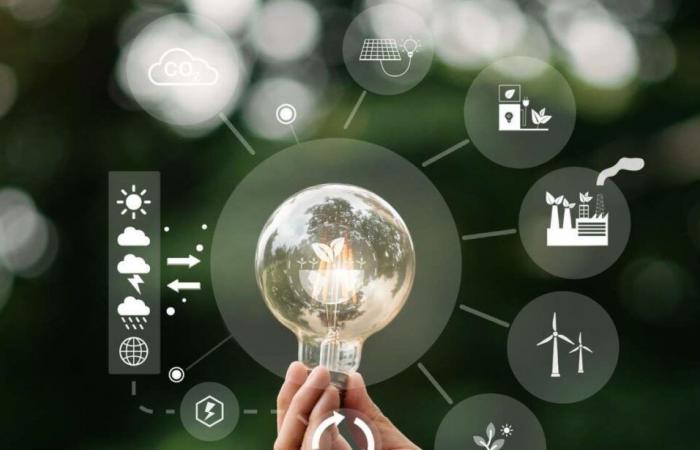In 2023, the Chilean electrical system reduced its CO₂ emissions and 63% of its electricity from renewable sources. However, reaching a completely decarbonized model requires accelerating digitalization, automation and cooperation between sectors.
Globally, the Transition to a world without carbon emissions is no longer a distant aspirationbut an ongoing process that redefines the energy future. In addition, climatic urgency and the need to strengthen energy security have turned decarbonization into one of the main global goals.
In this context, the report Green Transition Scenarios Statkraft (2024), projects that Transition of the energy sector will continue to accelerate worldwide, driven by the decrease in renewable energy costsas well as for climatic and energy security concerns. In addition, the report emphasizes that wind and solar energy will quadruple by 2030 and increase 13 times by 2050, allowing the electricity sector to be fully decarbonized in 2050.
And in the face of this panorama Chile, it is already showing significant advances in this direction. According to data from the national electrical coordinator, In 2023 the electrical system reduced its CO₂ emissions 21%. In addition, 63% of electricity was generated by renewable sources, while the generation from coal fell by 27%, marking a milestone in the national energy transition. However, the report Fostering Effective Energy Transition of the World Economic Forum (2024), positions Chile among the 20 best worldwide to advance in this matter.
However, despite the advances the way to a full energy transition still presents challenges. This is why the cooperation between the public and private sector and the implementation of innovative solutions will be decisive to accelerate this process and consolidate a sustainable and resilient energy model.
In relation to the above, Víctor Paredes, director Power System, indicates that “the energy transition not only requires a greater deployment of renewable energy, but also of a more efficient and digitized management of the electrical system.”
In front of this challenge, platforms like Resource Advisor, From Schneider Electric, they help monitor emission data based on key metrics. To this is added Zeigo Activatewhich allows small and medium enterprises to measure their emissions, develop a decarbonization roadmap and access solution suppliers. “One solution is designed for large companies and the other for SMEs, thus covering the entire ecosystem,” says Paredes.
“Digital technologies are essential to achieve the commitment we have as a country. The digital makes the data visible, and if you can see, you can follow up to adjust and improve the efficiency in assets, processes and operations in companies,” the expert culminates.
However, it is worth noting that Schneider Electric has developed a comprehensive decarbonization plan and a net-zero commitment that reinforces its sustainability leadership. Through your decarbonization program Zero Carbon Project -Led in April 2021-, the company provides its partners accessing specialized training, support of experts and technological tools that allow accelerating the reduction of emissions with a positive impact on the climate.
If you are interested in receiving news published in Mining Report | The Mining Portal in Chile, register your email here
If you are going to use content of our newspaper (texts or simply data) in some means of communication, blog or social networks, indicates the source, otherwise you will be incurring a crime sanctioned Law No. 17,336, on intellectual property. The above does not govern photographs and videos, as its reproduction for informative purposes is totally prohibited.
Comment here






